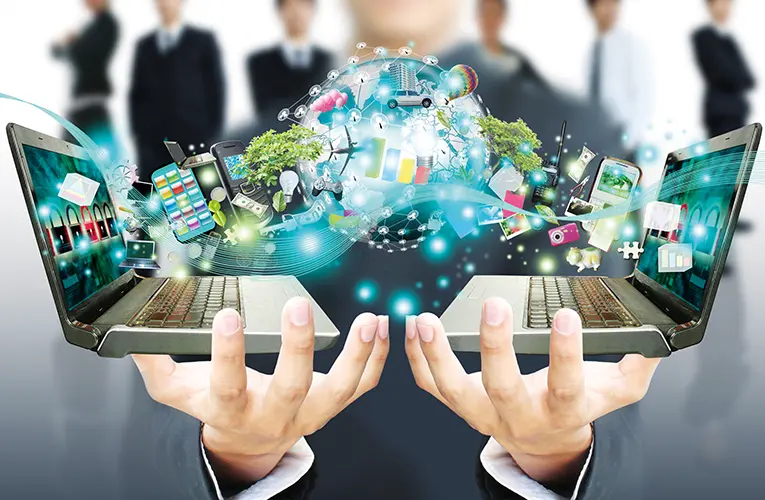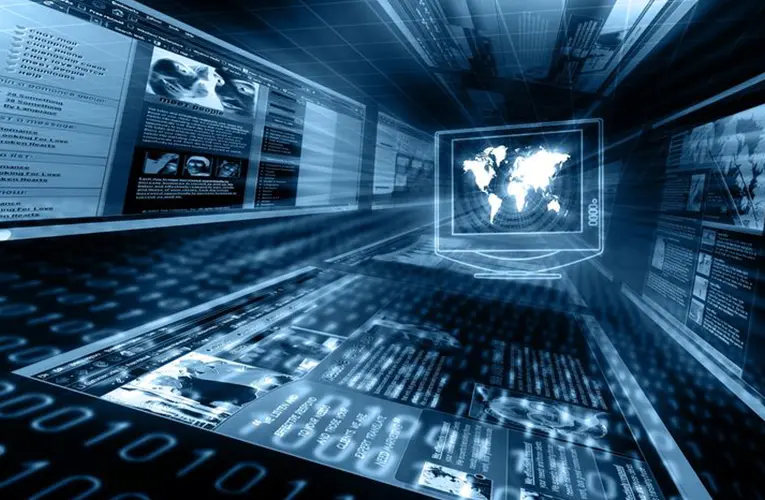“Tech Trends That Will Shape the Future”
### “Tech Trends That Will Shape the Future”
Technology is evolving at an unprecedented pace, and several emerging trends are poised to significantly impact our lives, industries, and society as a whole. This guide explores the key technology trends that are expected to shape the future, providing insights into their potential impacts and applications.
—
### 1. Artificial Intelligence and Machine Learning
– **Overview:**
– **Definition:** Artificial Intelligence (AI) refers to systems that can perform tasks typically requiring human intelligence, such as understanding language and recognizing patterns. Machine Learning (ML) is a subset of AI that involves training algorithms to learn from and make predictions based on data.
– **Applications:** From virtual assistants and chatbots to advanced data analytics and autonomous vehicles.
– **Key Trends:**
– **Generative AI:** AI models like GPT-4 and beyond are creating content, from text and images to music and video. These models enhance creativity and automate content generation.
– **AI in Healthcare:** Predictive analytics, personalized medicine, and AI-driven diagnostics are transforming healthcare, improving outcomes, and optimizing treatments.
– **Ethical AI:** As AI technology advances, there is a growing focus on developing ethical guidelines and frameworks to address issues such as bias, transparency, and accountability.
– **Impact:**
– **Business Efficiency:** AI and ML are streamlining operations, enhancing customer experiences, and enabling data-driven decision-making.
– **Job Market:** Automation and AI will continue to influence the job market, creating new opportunities while displacing certain roles.
—
### 2. Quantum Computing
– **Overview:**
– **Definition:** Quantum computing uses principles of quantum mechanics to process information in ways that classical computers cannot, potentially solving complex problems much faster.
– **Potential:** Quantum computers could revolutionize fields like cryptography, material science, and complex system simulation.
– **Key Trends:**
– **Advancements in Hardware:** Progress in quantum hardware, including qubits and quantum processors, is moving towards more stable and scalable systems.
– **Quantum Supremacy:** Achieving quantum supremacy, where a quantum computer performs a task beyond the capability of classical computers, is a major milestone.
– **Practical Applications:** Developing practical applications for quantum computing, such as drug discovery and optimization problems, is a growing focus.
– **Impact:**
– **Cryptography:** Quantum computers could potentially break current encryption methods, prompting the need for quantum-resistant cryptography.
– **Scientific Research:** Accelerating research and discovery in fields such as chemistry and physics by solving complex problems more efficiently.
—
### 3. 5G and Beyond
– **Overview:**
– **Definition:** 5G is the fifth generation of mobile network technology, offering significantly faster speeds, lower latency, and greater connectivity compared to previous generations.
– **Potential:** 5G enables new applications and services, including enhanced mobile broadband, massive IoT, and ultra-reliable low-latency communications.
– **Key Trends:**
– **Expanded Coverage:** Rollout of 5G networks globally is expanding coverage and accessibility, especially in urban and remote areas.
– **IoT Integration:** 5G supports the proliferation of Internet of Things (IoT) devices, enabling smart cities, connected vehicles, and industrial automation.
– **Edge Computing:** Combining 5G with edge computing enhances processing capabilities at the network edge, reducing latency and improving real-time data analysis.
– **Impact:**
– **Enhanced Connectivity:** Improved connectivity and data transfer speeds support emerging technologies like autonomous vehicles, augmented reality, and telemedicine.
– **Economic Growth:** 5G is expected to drive significant economic growth by enabling new business models and services.
—
### 4. Extended Reality (XR)
– **Overview:**
– **Definition:** Extended Reality (XR) encompasses virtual reality (VR), augmented reality (AR), and mixed reality (MR), creating immersive and interactive experiences.
– **Applications:** XR is used in gaming, education, training, healthcare, and more, offering innovative ways to engage with digital content.
– **Key Trends:**
– **Enhanced Immersion:** Advances in hardware and software are improving the quality of XR experiences, including more realistic graphics and haptic feedback.
– **Enterprise Applications:** XR is being increasingly adopted for training, remote collaboration, and product design in various industries.
– **Consumer Adoption:** Growing interest in XR applications, such as gaming and virtual events, is driving consumer adoption and innovation.
– **Impact:**
– **Education and Training:** XR provides immersive learning environments and realistic simulations for training purposes.
– **Entertainment:** Expanding the possibilities of interactive and immersive entertainment experiences.
—
### 5. Blockchain and Decentralized Technologies
– **Overview:**
– **Definition:** Blockchain is a decentralized, distributed ledger technology that ensures transparency and security in transactions. Decentralized technologies leverage blockchain to create trustless systems without central authority.
– **Applications:** Used in cryptocurrencies, smart contracts, supply chain management, and decentralized finance (DeFi).
– **Key Trends:**
– **NFTs and Digital Assets:** Non-fungible tokens (NFTs) are gaining popularity for digital art, collectibles, and ownership verification.
– **DeFi Expansion:** Decentralized finance platforms are offering alternative financial services, including lending, borrowing, and trading, without intermediaries.
– **Interoperability:** Developing solutions to enhance interoperability between different blockchain networks and platforms.
– **Impact:**
– **Financial Services:** Blockchain and DeFi are transforming financial services by providing decentralized and transparent alternatives to traditional banking.
– **Supply Chain Transparency:** Blockchain enhances traceability and transparency in supply chains, improving efficiency and reducing fraud.
—
### 6. Biotechnology and Genomics
– **Overview:**
– **Definition:** Biotechnology involves using biological systems and organisms to develop products and technologies. Genomics focuses on the study of genomes and their functions, enabling advances in personalized medicine and genetic engineering.
– **Applications:** Includes gene editing, synthetic biology, and personalized medicine.
– **Key Trends:**
– **CRISPR and Gene Editing:** Advances in CRISPR technology allow precise gene editing for medical research, agriculture, and disease treatment.
– **Personalized Medicine:** Utilizing genomic data to tailor medical treatments and interventions based on individual genetic profiles.
– **Synthetic Biology:** Designing and constructing new biological parts, devices, and systems for applications in health, agriculture, and industry.
– **Impact:**
– **Healthcare Innovation:** Biotechnology and genomics are driving innovation in disease treatment, diagnostics, and personalized healthcare solutions.
– **Agricultural Advancements:** Enhancing crop yields, pest resistance, and sustainability through genetic modification and synthetic biology.
—
### 7. Sustainable Technology and Green Innovations
– **Overview:**
– **Definition:** Sustainable technology focuses on minimizing environmental impact and promoting energy efficiency, conservation, and eco-friendly practices.
– **Applications:** Includes renewable energy, energy-efficient devices, and sustainable materials.
– **Key Trends:**
– **Renewable Energy:** Advancements in solar, wind, and other renewable energy sources are reducing reliance on fossil fuels and decreasing carbon emissions.
– **Circular Economy:** Emphasizing recycling, reusing, and reducing waste to create a more sustainable and efficient economy.
– **Green Computing:** Developing energy-efficient computing technologies and practices to reduce the environmental footprint of data centers and electronic devices.
– **Impact:**
– **Environmental Benefits:** Reducing carbon emissions, conserving resources, and promoting sustainability through green technologies.
– **Economic Opportunities:** Creating new markets and job opportunities in renewable energy, recycling, and sustainable industries.
—
### 8. Robotics and Automation
– **Overview:**
– **Definition:** Robotics involves designing and operating robots to perform tasks autonomously or semi-autonomously. Automation refers to using technology to perform tasks without human intervention.
– **Applications:** Used in manufacturing, healthcare, logistics, and service industries.
– **Key Trends:**
– **Collaborative Robots (Cobots):** Robots designed to work alongside humans, enhancing productivity and safety in various work environments.
– **Autonomous Vehicles:** Developing self-driving cars and drones that operate without human intervention, transforming transportation and logistics.
– **Smart Automation:** Integrating AI and IoT with automation systems to create intelligent and adaptive processes.
– **Impact:**
– **Increased Efficiency:** Robotics and automation streamline processes, reduce labor costs, and enhance productivity across industries.
– **Workforce Transformation:** Changing the nature of work and requiring new skills for jobs related to robotics and automation technologies.
—
### 9. Cybersecurity and Privacy
– **Overview:**
– **Definition:** Cybersecurity involves protecting systems, networks, and data from digital attacks, while privacy focuses on safeguarding personal information and maintaining data confidentiality.
– **Importance:** With the increasing reliance on digital technologies, cybersecurity and privacy are critical for protecting sensitive information and ensuring trust.
– **Key Trends:**
– **Zero Trust Architecture:** Adopting a zero-trust model where access is continuously verified, and trust is never assumed, to enhance security.
– **AI-Driven Security:** Utilizing AI and machine learning to detect and respond to cyber threats in real-time.
– **Data Privacy Regulations:** Growing focus on data privacy laws and regulations, such as GDPR and CCPA, to protect user information.
– **Impact:**
– **Enhanced Protection:** Improving security measures to safeguard against cyber threats and data breaches.
– **Regulatory Compliance:** Ensuring compliance with data privacy laws and regulations to avoid penalties and protect user trust.
—
### 10. Future Prospects and Conclusion
– **Emerging Technologies:**
– **Technological Convergence:** Exploring how emerging technologies like AI, quantum computing, and blockchain intersect and influence each other.
– **Ethical Considerations:** Addressing ethical and societal implications of advanced technologies, including issues










